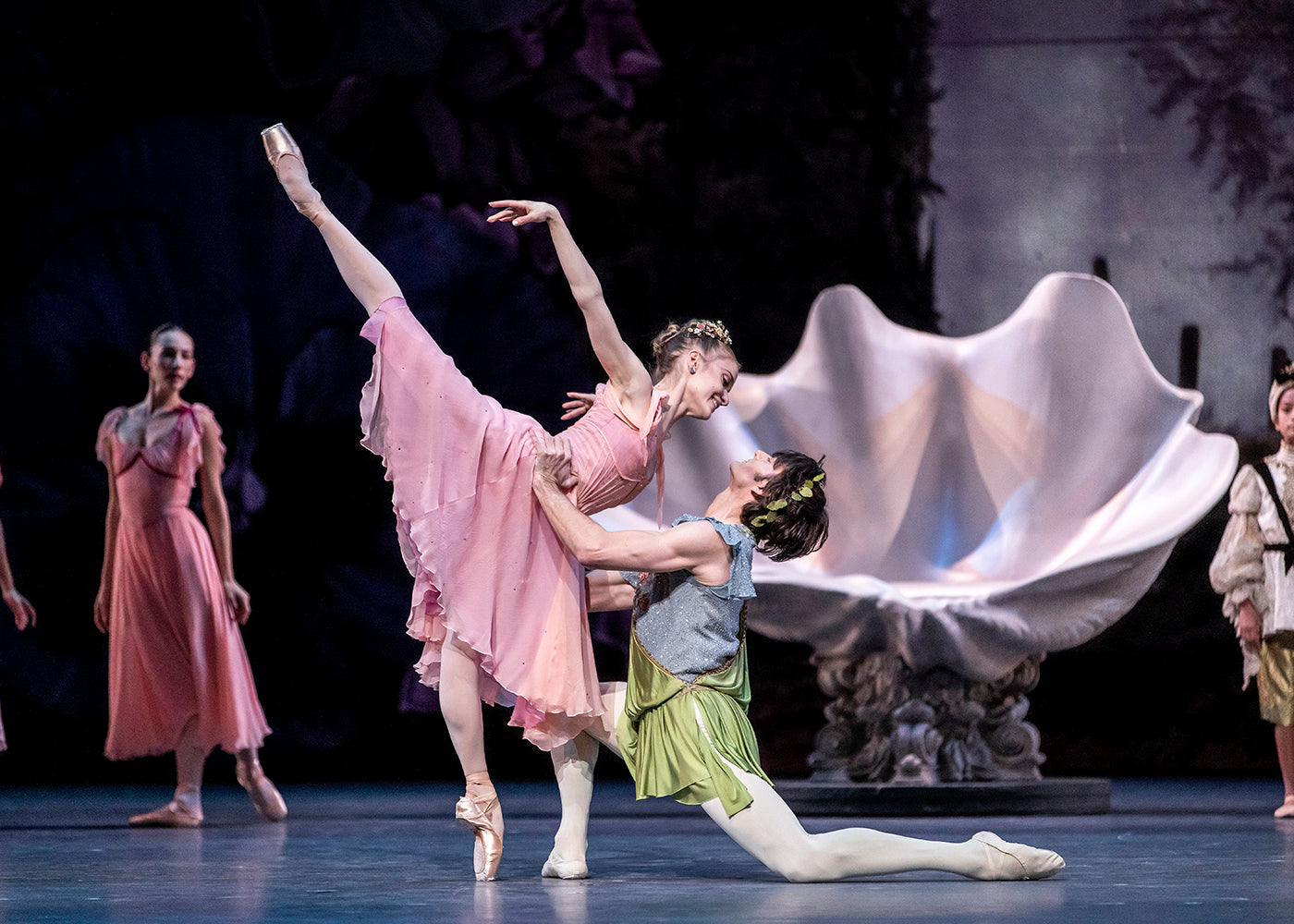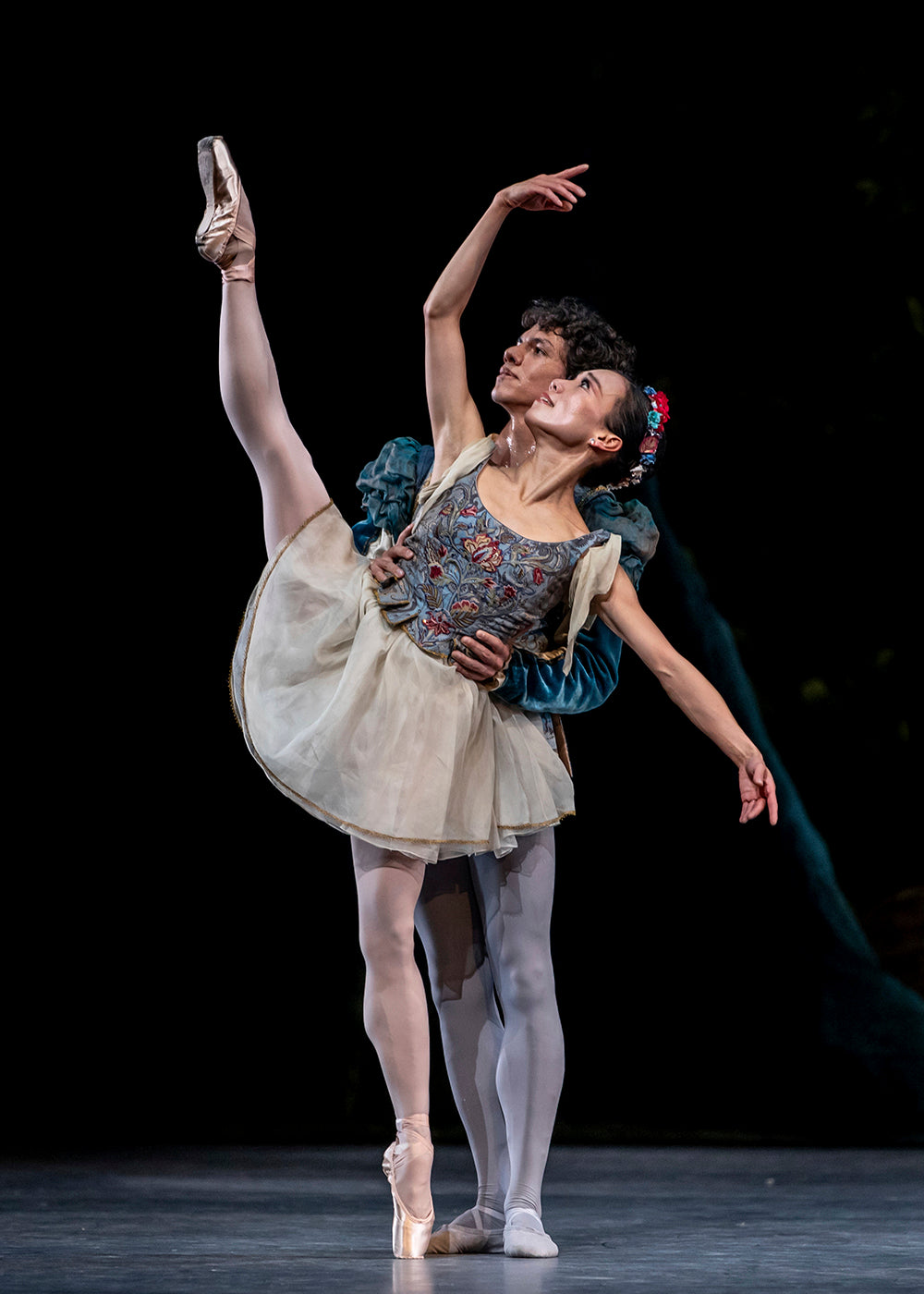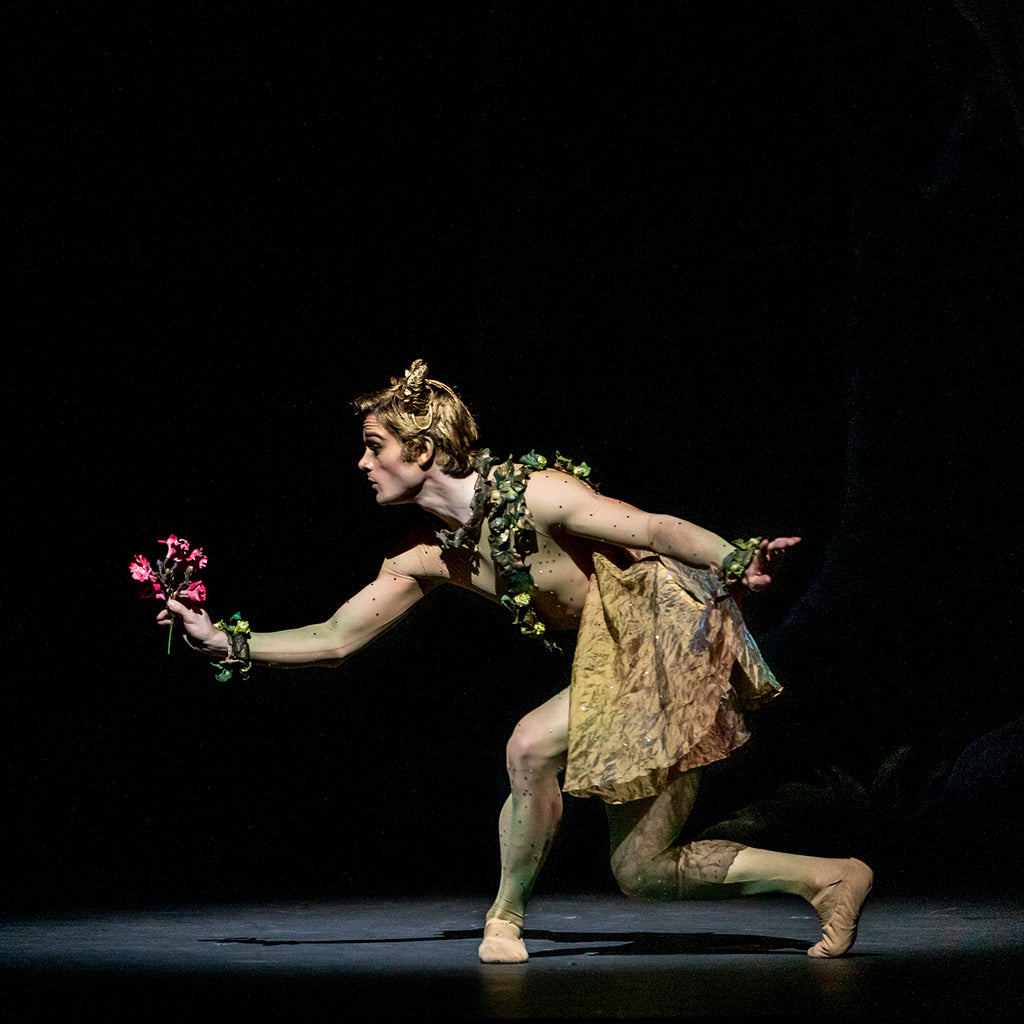Perhaps this shouldn’t be surprising—under the artistic direction of former New York City Ballet star Helgi Tomasson, SF Ballet became known as a leading “Balanchine company”—but whether the strong connection to Balanchine’s work will endure remains to be seen late next month, when Rojo will announce the 2025 programming. “Midsummer” was the only Balanchine on offer for 2024, the first season Rojo programmed here. As staged by Sandra Jennings, what a feast it provided for dancers hungry to push their gifts to the limits.
In some ways, this “Midsummer” run felt like the final act of “Sleeping Beauty,” when everyone wakes up from a long sleep to find the palace décor changed, the main character the same yet suddenly grown up. “Midsummer” was the last ballet SF Ballet danced before the Covid-19 shut-down, with one performance before the city shuttered its theaters. Back in 2020, Esteban Hernández was our youthful main character, dancing opening night as Puck. For 2024, he was opening night’s Oberon, suddenly commanding, furrowed-of-brow, and ill-tempered at Queen Titania’s refusal to hand over her favorite child attendant, setting in motion the whole plot to avenge himself by having Puck sprinkle the magic flower pollen on her sleeping face, so that she woke up to fall in love with an ass named Bottom.
Acting like a jerk does not come naturally to Hernández, who has a mild jaw, a button nose, and an irrepressible generosity, but he pulled it off, angry to a point of threatening violence in his mime, and getting a big laugh from the audience as he waited for Puck with crossed arms and tapping toe. Flying fast through petite allegro, on the other hand, seems completely natural to Hernández, and his passes through Oberon’s famously devilish solo were sheer beauty, the entrechat beats so crisp, those second position feet frozen like a snapshot mid-air, yet at the same time each crossing continuous and fast, the proverbial shot out of a canon.











comments